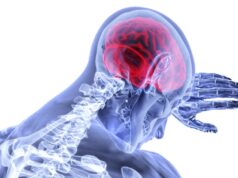
Three papers published in the journal Stroke have highlighted multidisciplinary care and global, collaborative efforts as “paramount” in the management of intracranial aneurysms, chronic subdural haematomas (cSDHs), and brain arteriovenous malformations (AVMs). These recommendations were led by the Aneurysm/AVM/cSDH Roundtable Discussion with Industry and Stroke Experts (ARISE) group, which facilitates conversations between academia, industry, and regulators, and ultimately intends to optimise acute stroke care.
“As the neurovascular and neuroendovascular field continues to evolve rapidly with the introduction of new therapies—for example, in cSDH—into our discipline, which prove to be highly effective and safe through large, multicentre randomised controlled clinical trials, it remains critical that complex neurovascular pathologies like brain AVMs are managed in a multidisciplinary fashion at major neuroscience centres,” said Ajay Wakhloo (Tufts University School of Medicine, Boston, USA), co-organiser of the ARISE series of meetings alongside Adam Arthur (University of Tennessee Health Science Center/Semmes-Murphey Clinic, Memphis, USA), speaking to NeuroNews.
“Although in its infancy, artificial intelligence [AI]—already having been applied in detecting brain aneurysms—and robotics, will gradually become important in our field. A continuous, educational dialogue between all stakeholders, including the US FDA [Food and Drug Administration], NIH [National Institutes of Health], MedTech industry, and the scientific community, is mandatory to advance the field further.”
Intracranial aneurysms
The first of these papers—led by Stavropoula Tjoumakaris (Thomas Jefferson University, Philadelphia, USA) and colleagues—relates specifically to the management of intracranial aneurysms. It initially notes that these cases constitute a challenging neurological diagnosis associated with significant morbidity and mortality, also detailing that—despite “a plethora of microsurgical and endovascular techniques for the treatment of both ruptured and unruptured aneurysms”—there is currently no definitive consensus as to the best of these options.
Experts therefore convened to discuss the latest research, approaches and devices with the aim of improving outcomes for brain aneurysm patients. Key among their suggestions is the further incorporation of AI technologies as a means for capturing sequential aneurysm growth, identifying predictors of rupture, and using risk rupture predictions to guide treatment options. The ARISE consensus has also “strongly recommended” nationwide, systemic data collection for radiographic images of unruptured aneurysms, to facilitate the analysis and development of machine learning algorithms designed to anticipate rupture risks.
Tjoumakaris et al’s recommendations highlight optical coherence tomography (OCT) and magnetic resonance (MR) contrast-enhanced 3T vessel wall imaging as “promising technologies”, but go on to note that “more data are needed” to define their role in aneurysm management. In addition, their consensus paper voices support for centres of excellence through which multicentre, preclinical trials—in areas including genetics, cellular composition and radiogenomics—can be conducted. Regarding the role of multidisciplinary, collaborative approaches, the authors state that ruptured aneurysms are “best managed” at larger, high-volume centres that should ideally incorporate comprehensive patient management, and expertise across microsurgery, endovascular surgery, neurology and neurocritical care.
“The future of intracranial aneurysm diagnosis and monitoring could be enhanced by the incorporation of AI, and national radiographic and biologic registries,” they conclude. “A collaborative effort between academic centres, government regulators, and the device industry, is paramount for the adequate management of intracranial aneurysms and the advancement of the field.”
Chronic SDHs
In a second paper published recently by the ARISE group, Peter Kan (The University of Texas Medical Branch, Galveston, USA) et al provide a consensus statement on the optimal management of cSDHs—focusing primarily on new data from the EMBOLISE, MAGIC-MT and STEM trials, which all produced outcomes favouring the use of middle meningeal artery (MMA) embolisation. The authors note that multiple randomised controlled trials have now produced high-level evidence demonstrating MMA embolisation is a “potent” adjunct to surgical and non-surgical standard care paradigms in neurologically stable cSDH patients.
“Pooled data analyses following the formal conclusion and publication of these trials will form a robust foundation upon which guidelines can be strengthened for cSDH treatment modalities, and optimal patient selection, as well as delineate future lines of investigation,” they add.
Brain AVMs
A third paper published by Edgar Samaniego (University of Iowa, Iowa City, USA) et al on behalf of the ARISE group pertains to the management of brain AVMs—complex, rare arteriovenous shunts that present with a wide range of signs and symptoms. According to the authors, “despite prior societal position statements”, there is no consensus on how these patients should be managed.
Emphasising the importance for evidence-based approaches and an enhanced understanding of brain AVMs, ARISE discussions identified the need to develop scales to predict the risk of rupture in brain AVMs, and the use of “common data elements” to execute prospective registries and clinical studies. And—similarly to intracranial aneurysms—they also highlight the vital role of comprehensive patient management at specialised centres, as well as a multifaceted care approach with expertise spanning cranial and spinal microsurgery, neurological endovascular surgery, and stereotactic radiosurgery.
Finally, the group deems collecting prospective, multicentre data and gross specimens as “essential” for improving brain AVM characterisation, genetic evaluation, and phenotyping. The paper also highlights the need for multidisciplinary frameworks and collaborative research across multiple centres, with a view to harnessing “collective expertise and centralisation of resources”, in brain AVM management.
ARISE II
“Since all stakeholders gave very positive feedback on the ARISE meeting last year, Dr Arthur and I decided to move the ARISE II meeting—initially planned for 2025—to this year,” Wakhloo stated.
The upcoming ARISE II meeting (23–24 May 2024, Washington DC, USA) will see stroke experts including representatives of medical academia, the healthcare industry and government agencies discuss intracranial atherosclerotic disease (ICAD), intracranial haemorrhage (ICH), and cerebral venous disease (CVD).
Conversations at this year’s ARISE II meeting will pertain to the improved acute and elective management, treatment, and prevention, of these disease areas. The group intends to develop new approaches to overcome barriers impeding drug and device development, and also identify, clarify and communicate the implications of new research for cerebrovascular diseases, with a view to subsequently publishing more consensus recommendations authored by ARISE participants in an effort to address these concerns.
“This year, the three diseases we are discussing are intracranial atherosclerotic disease, intracranial haemorrhage and cerebral venous disease,” Arthur told NeuroNews. “These are three areas of medicine where patients still suffer significant strokes, and research to improve treatments is very much needed. The discussion and publication of consensus statements is intended to help move the field forward and improve care.”










